That anodised (ceramic...) SB metal dome is remarkable:
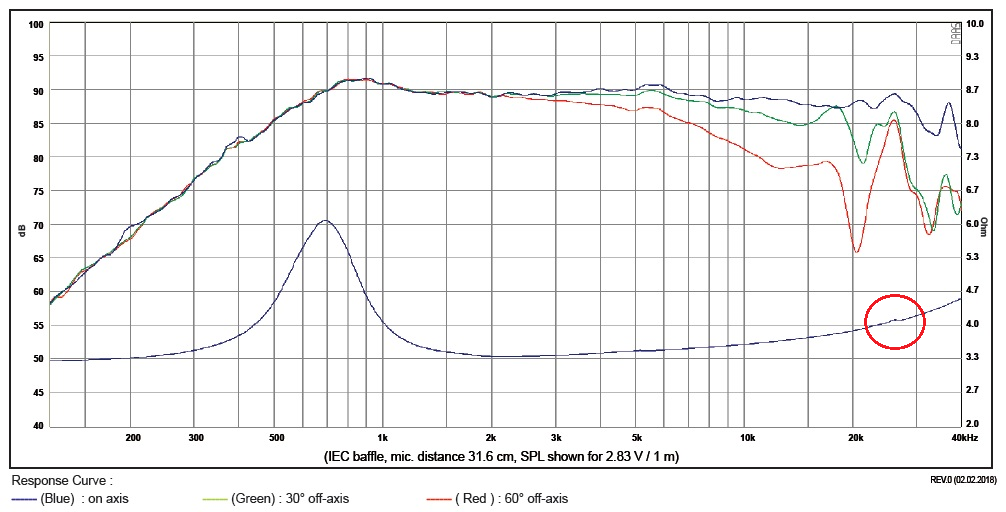
SB Acoustics :: SB26CDC-C000-4
They've got rid of the usual huge peak around supersonic 25kHz. How did they do that?
I spent the morning on my old SEAS 19TAF/G metal tweeters. They do sound very clear crossed at 3kHz. Chet Atkins and Mark Knopfler play to the tweeters strengths. Life in the old dogs!
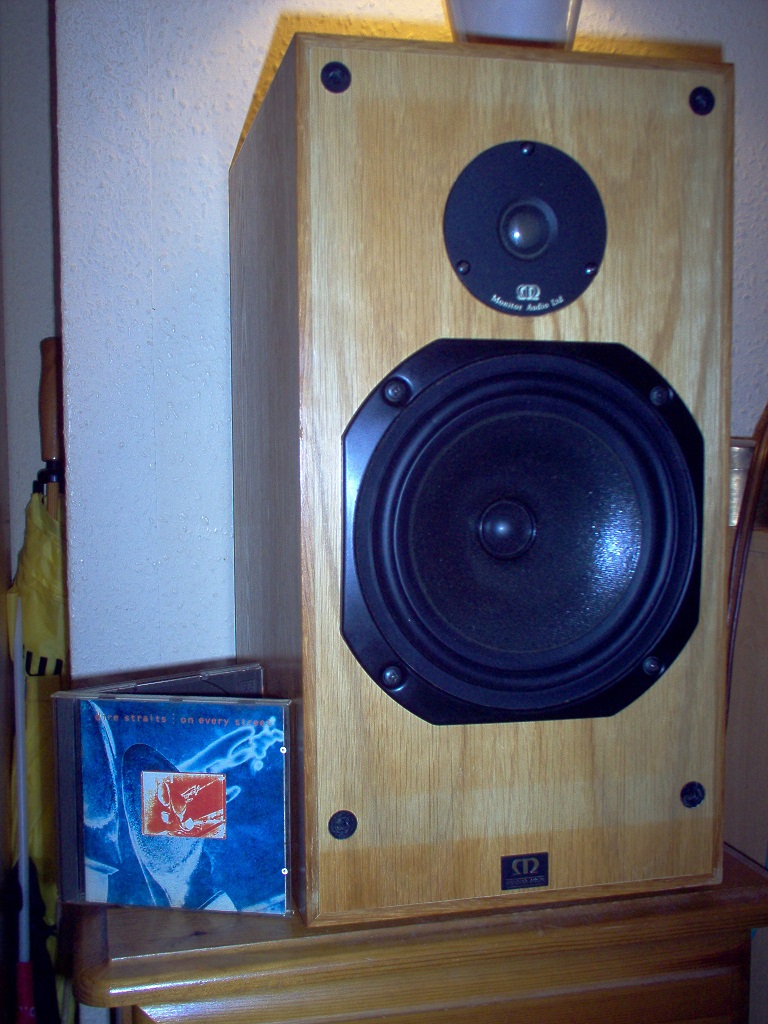
Most of the SB designs I've seen seem to use a lowish second order on tweeters. I never get that. The old butterworth BW3 does it for me. 4th order can be good too, IMO. Very low distortion. I used this old KEF circuit today.
SB Acoustics :: SB26CDC-C000-4
They've got rid of the usual huge peak around supersonic 25kHz. How did they do that?
I spent the morning on my old SEAS 19TAF/G metal tweeters. They do sound very clear crossed at 3kHz. Chet Atkins and Mark Knopfler play to the tweeters strengths. Life in the old dogs!
Most of the SB designs I've seen seem to use a lowish second order on tweeters. I never get that. The old butterworth BW3 does it for me. 4th order can be good too, IMO. Very low distortion. I used this old KEF circuit today.
Attachments
The off-axis and Z plot reveals some break-up, although if the ceramic helps about harmonic multiplication, will be good.
I have built a project with the aluminium version, and the harmonic multiplication is basically a non-issue, lower than most metal domes I've measured. Perhaps the ceramic is even better.
This tweeter series I recommend heartely. Good in almost all aspects but in efficiency. And the fs NEEDS to be eliminated or you can listen the plastic rear chamber resonating (but this applies to all SBA tweeters with similar motor/chamber).
I have built a project with the aluminium version, and the harmonic multiplication is basically a non-issue, lower than most metal domes I've measured. Perhaps the ceramic is even better.
This tweeter series I recommend heartely. Good in almost all aspects but in efficiency. And the fs NEEDS to be eliminated or you can listen the plastic rear chamber resonating (but this applies to all SBA tweeters with similar motor/chamber).
By the way, these hard dome/soft dome/cone tweeter debate...
Some can accuse metal domes being resonating with the front lens. True, but some are very good on this, and at end sounds better than the poor off-axis from most soft domes. SBA, Focal and some others have Be domes that don't have front lens, and SBA for example have off-axis response more or less soft domes, but don't sounds exactly the same. If we analyze all angles from 0 to 90 degrees continuously and at all frequencies perhaps we can find more info about why it happens. (example: the case of dome resonance resolved only at small angles)
Some can accuse metal domes being resonating with the front lens. True, but some are very good on this, and at end sounds better than the poor off-axis from most soft domes. SBA, Focal and some others have Be domes that don't have front lens, and SBA for example have off-axis response more or less soft domes, but don't sounds exactly the same. If we analyze all angles from 0 to 90 degrees continuously and at all frequencies perhaps we can find more info about why it happens. (example: the case of dome resonance resolved only at small angles)
Good in almost all aspects but in efficiency.
You can drive them without a resistor 🙂 besides, high efficiency like CD are hard to mate to a conventional home use midwoofer/midrange.
I'm going to guess that it's a very well-designed phase shield.That anodised (ceramic...) SB metal dome is remarkable:
They've got rid of the usual huge peak around supersonic 25kHz. How did they do that?
Any significant resonances would show up either on the on-axis or off-axis frequency response, but nothing I've seen so far on this tweeter indicates any major high-frequency problems. The frequency responses, step response, and waterfall all look good.If so, it might show up as risidual energy?
SB Acoustics SB26ADC-C000-4 | HiFiCompass
If I had to point something out, there's a moderate-Q peak around 18kHz from 30 degrees and outwards, but that's hovering around the realm of audibility for most people anyway.
Those woofer cones look a lot like some woofers I fished out a Procus Infidibus a while ago....<picture of speaker>
Can you tell me more about yours?
Any significant resonances would show up either on the on-axis or off-axis frequency response, but nothing I've seen so far on this tweeter indicates any major high-frequency problems. The frequency responses, step response, and waterfall all look good.
SB Acoustics SB26ADC-C000-4 | HiFiCompass
If I had to point something out, there's a moderate-Q peak around 18kHz from 30 degrees and outwards, but that's hovering around the realm of audibility for most people anyway.
Why is this tweeter not more popular?
SB's best kept secret?
@Robbintip:

Those look slightly different from what I believe are Elac units here:
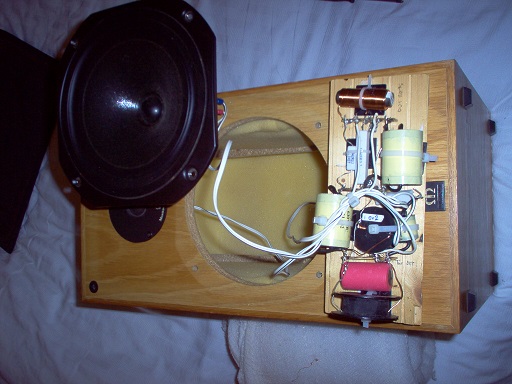
The 8" Elacs are 1" cardboard voicecoil former and rubber dustcaps with small magnet.
Restoring Monitor Audio R300 bookshelf speakers.
Joachim Gerhard is always willing to have a go at the 8" plus 1" idea, here in the Arkadia 2:
Sonics by Joachim Gerhard cabinets and kits.

Troels Gravesen has done a project on similar lines, with a little bass tank notch around 5kHz to tame breakup:
TQWT-
All experimental, but 8" woofers all seem to do much the same thing.
I have always been fascinated by BBC derived polycone designs: Harbeth Super HL5plus loudspeaker | Stereophile.com
You can actually still get these sort of woofers:
Seas P21RE/P H0942-08 Woofer. H0313 2015 remake
Back on-topic, I think that SB metal tweeter is cleverly engineered on-axis by the phase plate, but the 25kHz breakup is still there. They've moved it off-axis.

Those look slightly different from what I believe are Elac units here:
The 8" Elacs are 1" cardboard voicecoil former and rubber dustcaps with small magnet.
Restoring Monitor Audio R300 bookshelf speakers.
Joachim Gerhard is always willing to have a go at the 8" plus 1" idea, here in the Arkadia 2:
Sonics by Joachim Gerhard cabinets and kits.
Troels Gravesen has done a project on similar lines, with a little bass tank notch around 5kHz to tame breakup:
TQWT-
All experimental, but 8" woofers all seem to do much the same thing.
I have always been fascinated by BBC derived polycone designs: Harbeth Super HL5plus loudspeaker | Stereophile.com
You can actually still get these sort of woofers:
Seas P21RE/P H0942-08 Woofer. H0313 2015 remake
Back on-topic, I think that SB metal tweeter is cleverly engineered on-axis by the phase plate, but the 25kHz breakup is still there. They've moved it off-axis.
Yeah it was mainly the cone that drew my attention, haven't seen another one like these cones.
About the SB26ADC, would you think such a peak would be audible when the phase shield is removed? Or would it be too high up the band anyway?
Are there two tweeters that we can compare, in which the only variable is the phase shield?
About the SB26ADC, would you think such a peak would be audible when the phase shield is removed? Or would it be too high up the band anyway?
Are there two tweeters that we can compare, in which the only variable is the phase shield?
You can hear it... if you can hear above ~24 kHz.Yeah it was mainly the cone that drew my attention, haven't seen another one like these cones.
About the SB26ADC, would you think such a peak would be audible when the phase shield is removed? Or would it be too high up the band anyway?
Are there two tweeters that we can compare, in which the only variable is the phase shield?
The breakup in the ADC and CDC shows up clearly in my measurements, with or without the phase shield: SB Acoustics SB26 | somasonus. It's also clear from the manufacturer's info, excepting the on-axis of the CDC, I believe that data might be in error.
Thanks, interesting graphs. They are more readable.
That must have taken some time to do all those measurements and waveguides.
Taking a look on your website too (looking for NE123 measurements too).
Thanks again.
That must have taken some time to do all those measurements and waveguides.
Taking a look on your website too (looking for NE123 measurements too).
Thanks again.
When you think about it, metal tweeters are quite simple devices:
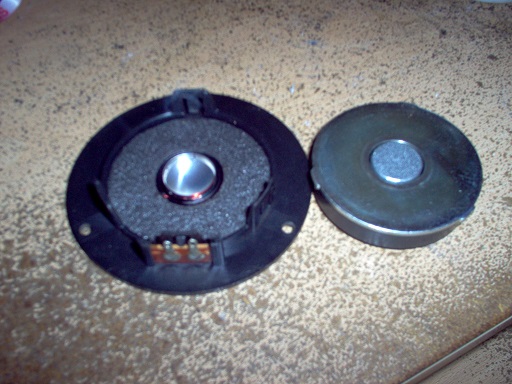
There aren't too many variables to play with! This being a SEAS 19 TAF/G. It has a mesh dome with some varnish in the middle to act as a phase plate.
Amazingly, SEAS experimented with a more complex phase plate in the SEAS 19 TAF/D.
Phase plates go back over 40 years....
Essentially a bit of dispersion control:
This is the illustrious 1975 German 1" Isophon KK10 plastic or mylar dome.
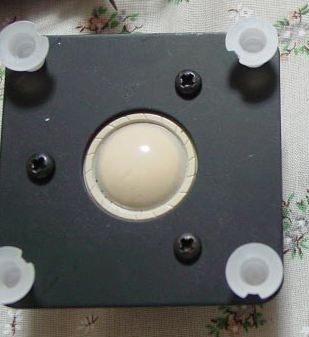
Mylar domes tend to overly bright above 5kHz, so Isophon also made a phase-plate version:
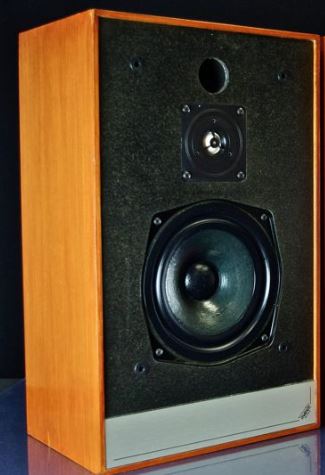
All just fiddling around, IMO. More of THIS, less of THAT! 😀
There aren't too many variables to play with! This being a SEAS 19 TAF/G. It has a mesh dome with some varnish in the middle to act as a phase plate.
Amazingly, SEAS experimented with a more complex phase plate in the SEAS 19 TAF/D.
Phase plates go back over 40 years....
Essentially a bit of dispersion control:
This is the illustrious 1975 German 1" Isophon KK10 plastic or mylar dome.
Mylar domes tend to overly bright above 5kHz, so Isophon also made a phase-plate version:
All just fiddling around, IMO. More of THIS, less of THAT! 😀
Part 2 of the discussion:
Joachim Gerhard is one of this forum's most thoughtful contributors.
Sonics by Joachim Gerhard cabinets and kits.
He has actually tried notching out the metal resonance, around 25-27kHz with an LCR:
Before:
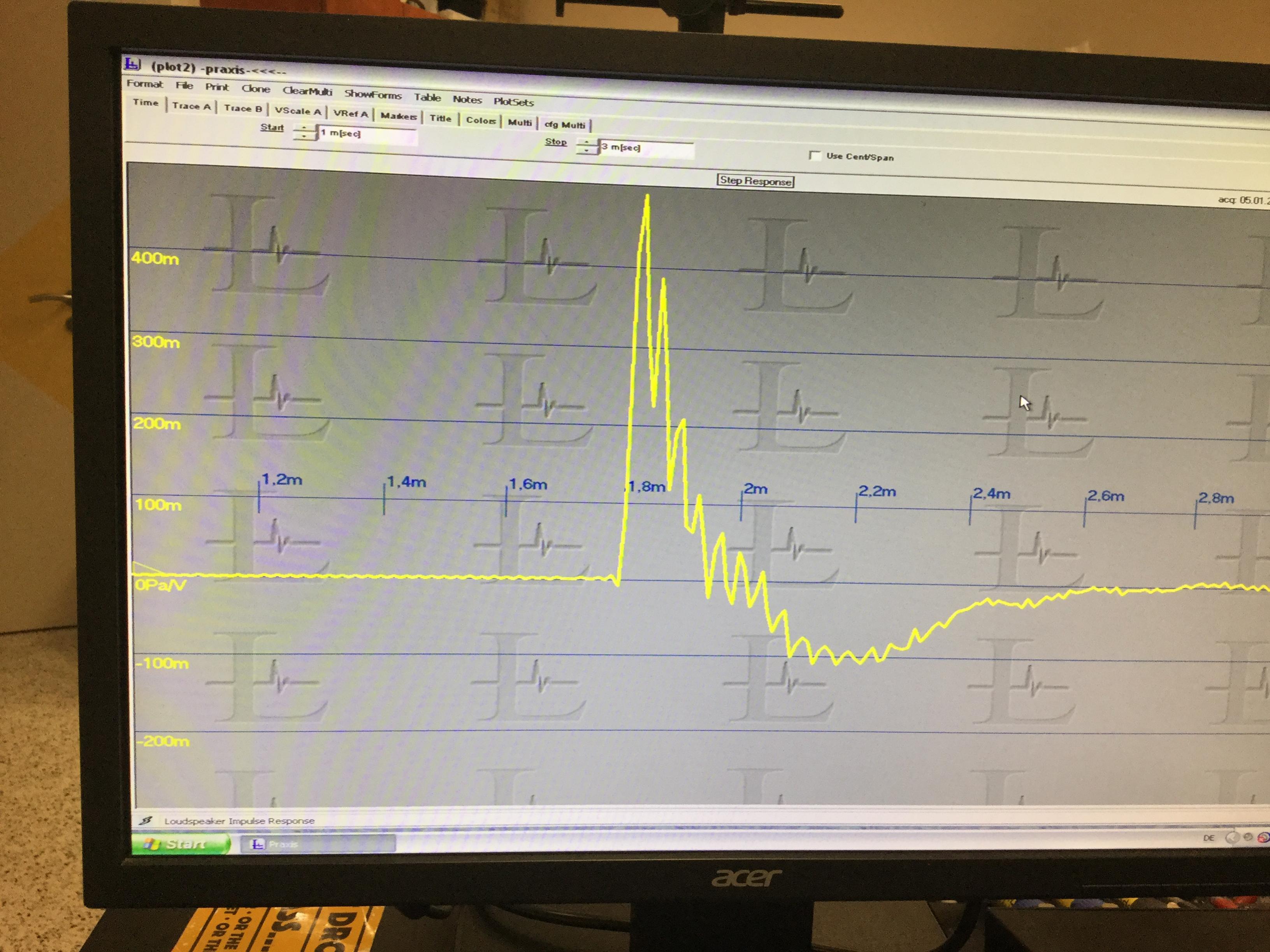
After:
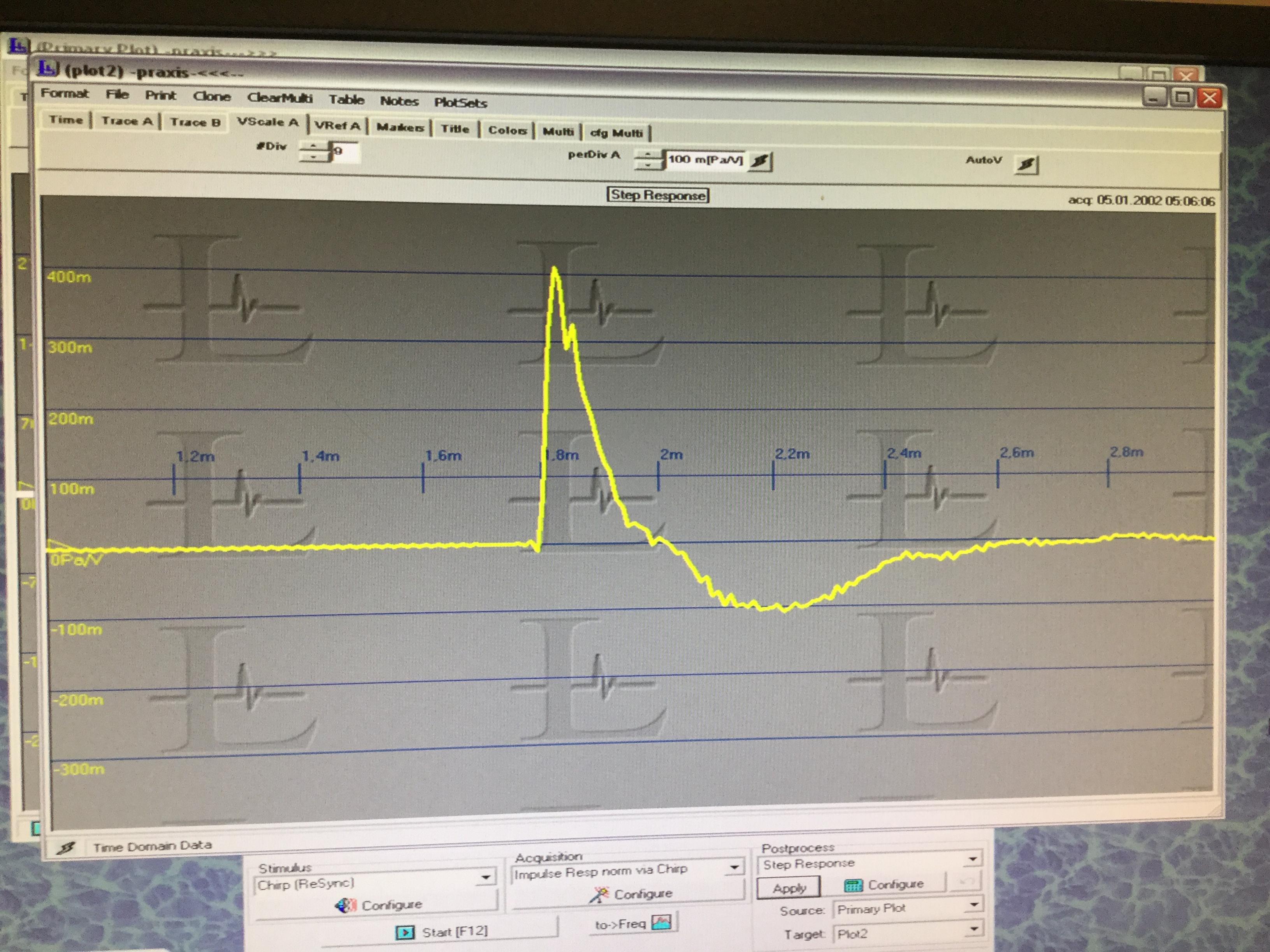
I have deliberately kept the images small. Look up the thread for more. It is easy to say that something above human hearing can have no effect. But that assumes amplifiers aren't struggling to deal with a huge high level, high frequency resonance.
My opinion is that they run out of steam with controlling this sort of load. And hence tend to gross distortion lower down. But I really don't know. 😕
Joachim Gerhard is one of this forum's most thoughtful contributors.
Sonics by Joachim Gerhard cabinets and kits.
He has actually tried notching out the metal resonance, around 25-27kHz with an LCR:
Before:
After:
I have deliberately kept the images small. Look up the thread for more. It is easy to say that something above human hearing can have no effect. But that assumes amplifiers aren't struggling to deal with a huge high level, high frequency resonance.
My opinion is that they run out of steam with controlling this sort of load. And hence tend to gross distortion lower down. But I really don't know. 😕
Visaton KE25 is one of those commercially available tweeters that employ a notch at resonance frequency.
Also, there is this:
https://www.diyaudio.com/forums/multi-way/322746-whoa-cool-tweeter-peerless-8.html#post5496523
Also, there is this:
https://www.diyaudio.com/forums/multi-way/322746-whoa-cool-tweeter-peerless-8.html#post5496523
I was under the impression that the rather exotic and expensive ceramic Visaton KE 25 SC had a built-in Fs resonance LCR notch around a low 800Hz.
Visaton seem not to have measured it above 20 kHz.
But a nice product, for sure. People have a good time with it.
Software | Visaton
Visaton seem not to have measured it above 20 kHz.
But a nice product, for sure. People have a good time with it.
Software | Visaton
Boxsim v2.0 is available here, it is much improved especially fro those doing active crossover speakers, that side is much inproved.
Boxsim 2.0 ist erschienen - Visaton Diskussionsforum
http://www.boxsim.de/download/Boxsim 2.00 EN.zip
Boxsim 2.0 ist erschienen - Visaton Diskussionsforum
http://www.boxsim.de/download/Boxsim 2.00 EN.zip
- Home
- Loudspeakers
- Multi-Way
- SB26ADC compared to SB29RDC
